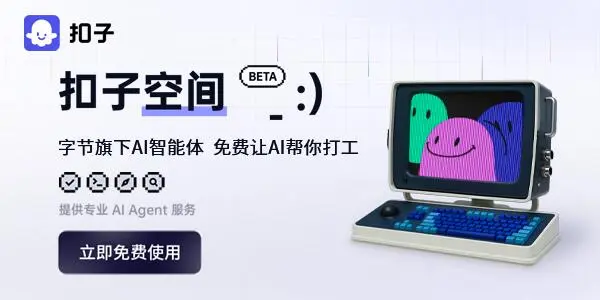中介者模式
在现实生活中,常常会出现好多对象之间存在复杂的交互关系,这种交互关系常常是“网状结构”,它要求每个对象都必须知道它需要交互的对象。例如,每个人必须记住他(她)所有朋友的电话;而且,朋友中如果有人的电话修改了,他(她)必须让其他所有的朋友一起修改,这叫作“牵一发而动全身”,非常复杂。
如果把这种“网状结构”改为“星形结构”的话,将大大降低它们之间的“耦合性”,这时只要找一个“中介者”就可以了。如前面所说的“每个人必须记住所有朋友电话”的问题,只要在网上建立一个每个朋友都可以访问的“通信录”就解决了。这样的例子还有很多,例如,你刚刚参加工作想租房,可以找“房屋中介”;或者,自己刚刚到一个陌生城市找工作,可以找“人才交流中心”帮忙。
在软件的开发过程中,这样的例子也很多,例如,在 MVC 框架中,控制器(C)就是模型(M)和视图(V)的中介者;还有大家常用的 QQ 聊天程序的“中介者”是 QQ 服务器。所有这些,都可以采用“中介者模式”来实现,它将大大降低对象之间的耦合性,提高系统的灵活性。
模式的定义与特点
中介者(Mediator)模式的定义:定义一个中介对象来封装一系列对象之间的交互,使原有对象之间的耦合松散,且可以独立地改变它们之间的交互。中介者模式又叫调停模式,它是迪米特法则的典型应用。
中介者模式是一种对象行为型模式,其主要优点如下。
- 类之间各司其职,符合迪米特法则。
- 降低了对象之间的耦合性,使得对象易于独立地被复用。
- 将对象间的一对多关联转变为一对一的关联,提高系统的灵活性,使得系统易于维护和扩展。
其主要缺点是:中介者模式将原本多个对象直接的相互依赖变成了中介者和多个同事类的依赖关系。当同事类越多时,中介者就会越臃肿,变得复杂且难以维护。
模式的结构
中介者模式包含以下主要角色。
- 抽象中介者(Mediator)角色:它是中介者的接口,提供了同事对象注册与转发同事对象信息的抽象方法。
- 具体中介者(Concrete Mediator)角色:实现中介者接口,定义一个 List 来管理同事对象,协调各个同事角色之间的交互关系,因此它依赖于同事角色。
- 抽象同事类(Colleague)角色:定义同事类的接口,保存中介者对象,提供同事对象交互的抽象方法,实现所有相互影响的同事类的公共功能。
- 具体同事类(Concrete Colleague)角色:是抽象同事类的实现者,当需要与其他同事对象交互时,由中介者对象负责后续的交互。
基本实现
中介者是协调多个对象之间的交互(逻辑和行为)的对象。它根据其他对象和输入的动作(或不动作)来决定何时调用哪些对象。
中间者模式的一种简单的实现可以在下面找到,publish() 和 subscribe() 方法都被暴露出来使用:
var mediator = (function(){
// Storage for topics that can be broadcast or listened to
var topics = {};
// Subscribe to a topic, supply a callback to be executed
// when that topic is broadcast to
var subscribe = function( topic, fn ){
if ( !topics[topic] ){
topics[topic] = [];
}
topics[topic].push( { context: this, callback: fn } );
return this;
};
// Publish/broadcast an event to the rest of the application
var publish = function( topic ){
var args;
if ( !topics[topic] ){
return false;
}
args = Array.prototype.slice.call( arguments, 1 );
for ( var i = 0, l = topics[topic].length; i < l; i++ ) {
var subscription = topics[topic][i];
subscription.callback.apply( subscription.context, args );
}
return this;
};
return {
publish: publish,
subscribe: subscribe,
installTo: function( obj ){
obj.subscribe = subscribe;
obj.publish = publish;
}
};
}());高级实现
如果你对更高级的代码实现感兴趣,深入下去可以浏览到 Jack Lawson 的 Mediator.js 的简洁版。除了其他的改进之外,这个版本还支持主题命名空间、订阅者删除和用于中介者的更强大的发布/订阅系统。但如果你想跳过这些内容,则可以直接进入下一个示例继续阅读。
首先,让我们来实现订阅者的概念,可以考虑一个中介者主题的注册。
通过生成对象实例,之后我们可以很容易地更新订阅者,而不需要注销并重新注册它们。订阅者可以写成构造函数,该函数接受三个参数:一个可被调用的函数 fn 、一个 options 对象和一个 context (上下文)
// Pass in a context to attach our Mediator to.
// By default this will be the window object
(function( root ){
function guidGenerator() { /*..*/}
// Our Subscriber constructor
function Subscriber( fn, options, context ){
if ( !(this instanceof Subscriber) ) {
return new Subscriber( fn, context, options );
}else{
// guidGenerator() is a function that generates
// GUIDs for instances of our Mediators Subscribers so
// we can easily reference them later on. We're going
// to skip its implementation for brevity
this.id = guidGenerator();
this.fn = fn;
this.options = options;
this.context = context;
this.topic = null;
}
}
})();
在我们的中介者主题中包涵了一长串的回调和子主题,当中间人发布在我们中介者实体上被调用的时候被启动.它也包含操作数据列表的方法
// Let's model the Topic.
// JavaScript lets us use a Function object as a
// conjunction of a prototype for use with the new
// object and a constructor function to be invoked.
function Topic( namespace ){
if ( !(this instanceof Topic) ) {
return new Topic( namespace );
}else{
this.namespace = namespace || "";
this._callbacks = [];
this._topics = [];
this.stopped = false;
}
}
// Define the prototype for our topic, including ways to
// add new subscribers or retrieve existing ones.
Topic.prototype = {
// Add a new subscriber
AddSubscriber: function( fn, options, context ){
var callback = new Subscriber( fn, options, context );
this._callbacks.push( callback );
callback.topic = this;
return callback;
},
...
我们的主题实体被当做中间人调用的一个参数被传递.使用一个方便实用的 calledStopPropagation() 方法,回调就可以进一步被传播开来:
StopPropagation: function(){
this.stopped = true;
},
我们也能够使得当提供一个 GUID 的标识符的时候检索订购用户更加容易:
GetSubscriber: function( identifier ){
for(var x = 0, y = this._callbacks.length; x < y; x++ ){
if( this._callbacks[x].id == identifier || this._callbacks[x].fn == identifier ){
return this._callbacks[x];
}
}
for( var z in this._topics ){
if( this._topics.hasOwnProperty( z ) ){
var sub = this._topics[z].GetSubscriber( identifier );
if( sub !== undefined ){
return sub;
}
}
}
},
接着,在我们需要它们的情况下,我们也能够提供添加新主题,检查现有的主题或者检索主题的简单方法:
AddTopic: function( topic ){
this._topics[topic] = new Topic( (this.namespace ? this.namespace + ":" : "") + topic );
},
HasTopic: function( topic ){
return this._topics.hasOwnProperty( topic );
},
ReturnTopic: function( topic ){
return this._topics[topic];
},
如果我们觉得不再需要它们了,我们也可以明确的删除这些订购用户。下面就是通过它的其子主题递归删除订购用户的代码:
RemoveSubscriber: function( identifier ){
if( !identifier ){
this._callbacks = [];
for( var z in this._topics ){
if( this._topics.hasOwnProperty(z) ){
this._topics[z].RemoveSubscriber( identifier );
}
}
}
for( var y = 0, x = this._callbacks.length; y < x; y++ ) {
if( this._callbacks[y].fn == identifier || this._callbacks[y].id == identifier ){
this._callbacks[y].topic = null;
this._callbacks.splice( y,1 );
x--; y--;
}
}
},
接着我们通过递归子主题将发布任意参数的能够包含到订购服务对象中:
Publish: function( data ){
for( var y = 0, x = this._callbacks.length; y < x; y++ ) {
var callback = this._callbacks[y], l;
callback.fn.apply( callback.context, data );
l = this._callbacks.length;
if( l < x ){
y--;
x = l;
}
}
for( var x in this._topics ){
if( !this.stopped ){
if( this._topics.hasOwnProperty( x ) ){
this._topics[x].Publish( data );
}
}
}
this.stopped = false;
}
};
接着我们暴露我们将主要交互的调节实体.这里它是通过注册的并且从主题中删除的事件来实现的
function Mediator() {
if ( !(this instanceof Mediator) ) {
return new Mediator();
}else{
this._topics = new Topic( "" );
}
};
对于更高级的使用场景,我们可以让中介者支持用于 inbox:messages:new:read 等主题的命名空间。在接下来的示例中, GetTopic 根据命名空间返回相应的主题实例
Mediator.prototype = {
GetTopic: function( namespace ){
var topic = this._topics,
namespaceHierarchy = namespace.split( ":" );
if( namespace === "" ){
return topic;
}
if( namespaceHierarchy.length > 0 ){
for( var i = 0, j = namespaceHierarchy.length; i < j; i++ ){
if( !topic.HasTopic( namespaceHierarchy[i]) ){
topic.AddTopic( namespaceHierarchy[i] );
}
topic = topic.ReturnTopic( namespaceHierarchy[i] );
}
}
return topic;
},
这一节我们定义了一个 Mediator.Subscribe 方法,它接受一个主题命名空间,一个将要被执行的函数,选项和又一个在订阅中调用函数的上下文环境.这样就创建了一个主题,如果这样的一个主题存在的话
Subscribe: function( topiclName, fn, options, context ){
var options = options || {},
context = context || {},
topic = this.GetTopic( topicName ),
sub = topic.AddSubscriber( fn, options, context );
return sub;
},
根据这一点,我们可以进一步定义能够访问特定订阅用户,或者将他们从主题中递归删除的工具
// Returns a subscriber for a given subscriber id / named function and topic namespace
GetSubscriber: function( identifier, topic ){
return this.GetTopic( topic || "" ).GetSubscriber( identifier );
},
// Remove a subscriber from a given topic namespace recursively based on
// a provided subscriber id or named function.
Remove: function( topicName, identifier ){
this.GetTopic( topicName ).RemoveSubscriber( identifier );
},
我们主要的发布方式可以让我们随意发布数据到选定的主题命名空间,这可以在下面的代码中看到。
主题可以被向下递归.例如,一条对 inbox:message 的 post 将发送到 inbox:message:new 和 inbox:message:new:read 。它将像接下来这样被使用: Mediator.Publish( "inbox:messages:new", [args] );
Publish: function( topicName ){
var args = Array.prototype.slice.call( arguments, 1),
topic = this.GetTopic( topicName );
args.push( topic );
this.GetTopic( topicName ).Publish( args );
}
};
最后,我们可以很容易的暴露我们的中间人,将它附着在传递到根中的对象上:
root.Mediator = Mediator;
Mediator.Topic = Topic;
Mediator.Subscriber = Subscriber;
// Remember we can pass anything in here. I've passed inwindowto
// attach the Mediator to, but we can just as easily attach it to another
// object if desired.
})( window );示例
无论是使用来自上面的实现(简单的选项和更加先进的选项都是),我们能够像下面这样将一个简单的聊天记录系统整到一起:
html
<h1>Chat</h1>
<form id="chatForm">
<label for="fromBox">Your Name:</label>
<input id="fromBox" type="text"/>
<br />
<label for="toBox">Send to:</label>
<input id="toBox" type="text"/>
<br />
<label for="chatBox">Message:</label>
<input id="chatBox" type="text"/>
<button type="submit">Chat</button>
</form>
<div id="chatResult"></div>JavaScript
$( "#chatForm" ).on( "submit", function(e) {
e.preventDefault();
// Collect the details of the chat from our UI
var text = $( "#chatBox" ).val(),
from = $( "#fromBox" ).val(),
to = $( "#toBox" ).val();
// Publish data from the chat to the newMessage topic
mediator.publish( "newMessage" , { message: text, from: from, to: to } );
});
// Append new messages as they come through
function displayChat( data ) {
var date = new Date(),
msg = data.from + " said \"" + data.message + "\" to " + data.to;
$( "#chatResult" ).prepend("<p>" + msg + " (" + date.toLocaleTimeString() + ")</p>");
}
// Log messages
function logChat( data ) {
if ( window.console ) {
console.log( data );
}
}
// Subscribe to new chat messages being submitted
// via the mediator
mediator.subscribe( "newMessage", displayChat );
mediator.subscribe( "newMessage", logChat );
// The following will however only work with the more advanced implementation:
function amITalkingToMyself( data ) {
return data.from === data.to;
}
function iAmClearlyCrazy( data ) {
$( "#chatResult" ).prepend("<p>" + data.from + " is talking to himself.</p>");
}
mediator.Subscribe( amITalkingToMyself, iAmClearlyCrazy );优点&缺点
中介者模式最大的好处就是,它节约了对象或者组件之间的通信信道,这些对象或者组件存在于从多对多到多对一的系统之中。由于解耦合水平的因素,添加新的发布或者订阅者是相对容易的。
也许使用这个模式最大的缺点是它可以引入一个单点故障。在模块之间放置一个中介者也可能会造成性能损失,因为它们经常是间接地的进行通信的。由于松耦合的特性,仅仅盯着广播很难去确认系统是如何做出反应的。
这就是说,提醒我们自己解耦合的系统拥有许多其它的好处,是很有用的——如果我们的模块互相之间直接的进行通信,对于模块的改变(例如:另一个模块抛出了异常)可以很容易的对我们系统的其它部分产生多米诺连锁效应。这个问题在解耦合的系统中很少需要被考虑到。
归根结底,紧耦合会导致各种头痛,这仅仅只是另外一种可选的解决方案,但是如果得到正确实现的话也能够工作得很好。
本文内容仅供个人学习/研究/参考使用,不构成任何决策建议或专业指导。分享/转载时请标明原文来源,同时请勿将内容用于商业售卖、虚假宣传等非学习用途哦~感谢您的理解与支持!




